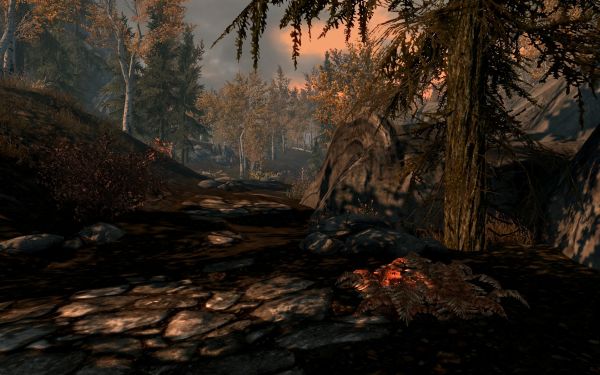
Still on vacation in Skyrim, the mythical home of the Nords. Perhaps this picture will explain why.


Still on vacation in Skyrim, the mythical home of the Nords. Perhaps this picture will explain why.
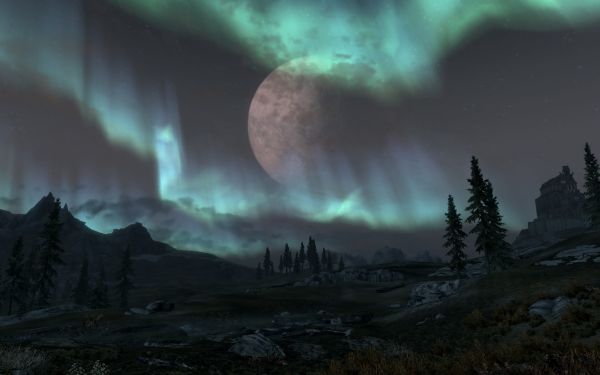
Still on vacation in Skyrim, the mythical home of the Nords. Â Perhaps this picture will explain why.
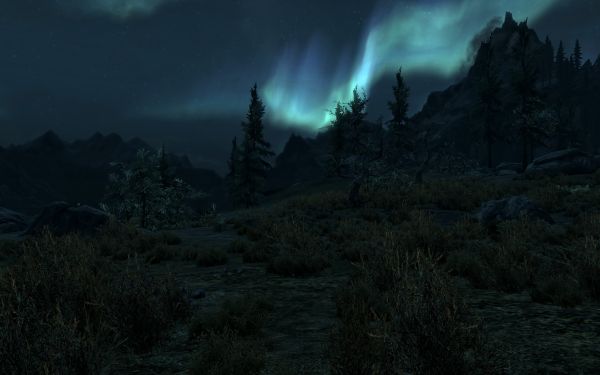
Still on vacation in Skyrim, the mythical home of the Nords. Â Perhaps this picture will explain why.
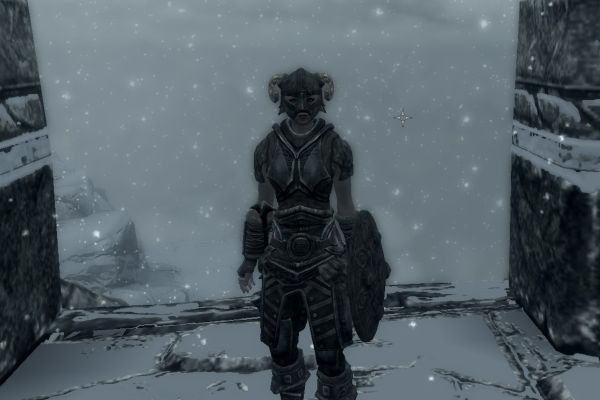
Hello, I am your new hero. May I come in? What, you only accept catgirls? Well, perhaps next time then.
This entry is about a computer game, so not very interesting. It may tell a little about the game, a little about the state of the world in 2011, and perhaps more than I intended about myself. Not very interesting, as I said.
I must admit that my first character was largely inspired by my experience with the two previous games in the series, and particularly the last of them, Oblivion from 2006. Since they run on the same hardware, and come from the same company, I assumed they would be fairly similar. My experience at level 16 is that yes, they are fairly similar.
There are one huge difference, in theory: This game has done away with classes entirely (well, except college classes at the magical college, but even then I only ever attended one, and it was quite informal.)
Now, what you do decides who you become. There are no “major” and “minor” skills. The different races (or possibly species in some cases) have different starting skills, but only to a modest degree. Most skills start at 15, with 20 when you have a racial bonus. Since any skill can be raised to 100 (I think, I have not come near that) you pretty much decide your own class by doing what you prefer. If you pick enough locks, your skill in lockpicking goes up. If you block enough attacks, your blocking goes up. (It also rises faster the harder the attacks you block, but that seems to be a bit of a special case.) If you cast enough spells of a certain type, you increase your skill with that and similar spells.
After enough skill gains (seems to be around 10?) you gain a level and can choose to increase either your health, your stamina, or your magic. That is pretty much the only part that is detached from your actual practice: You can bash on wolves for the entire level and never cast a spell, yet raise you magic. So that is an exception.
You can also pick “perks” within each skill. For instance I have several perks by now in blocking and heavy armor. However, each perk is associated with a minimum skill level, so I cannot for instance get perks in Destruction magic, where I am still a newbie.
So, at level 16, what kind of character have I become? Basically what we in City of Heroes call a “tanker” – the invulnerable guy or gal who wades in first and takes all the beating and remains standing, while the rest of the team does damage from a safe distance or from the flanks. I have a high block skill and heavy armor skill, a decent one-handed weapon skill, and an pretty good summoning skill (I have summoned a spectral wolf to assist me since the beginning of the game). Now that I have a follower (Lydia the housecarl), I can concentrate on blocking their attacks while Lydia and the wolf whale on them (or in the case of the wolf, wail on them) from the flanks. This works pretty well. If they turn on my companions, I use my weapon to convince them otherwise.
Life in the game became a lot easier once I qualified for the Quick Reflexes perk in blocking, by the way. This perk causes time to slow down when the enemy makes a power attack while I block. A power attack is a particular intense and dangerous attack that takes a moment of preparation to perform and drains far more stamina than other attacks. Players can also do this. But with the quick reflex perk, I can actually see when such an attack is beginning, and try to step back or slide aside. If the terrain allows and the attacker is not extremely fast, I can avoid the power attack entirely. This saves quite a bit in potions.
Yes, you can heal yourself with potions during the game, and even with eating stuff from your inventory. (That seems like a glitch, really, but the potions are strictly necessary to survive some of the opponents you meet.) On the other hand you cannot cast self-heal spells during battle. Well, you can, but that leaves you wide open for attacks. So in hard fights, I wait with the potions until there is an actual risk of defeat within the next few hits, to save on potions. Once the battle is over, I can heal easily with magic. And before the battle begins, I cast an Oak skin spell that adds to my defense, along with the heavy armor and the shield.
So who is this main battle tank? Is it a Redguard soldier, the dark-skinned desert and jungle people known for their superior fighting skills and adrenaline rush? Or perhaps a blond Nord berserker, also with some inborn fighting skills? Neither – in the game, I am a red-haired Breton woman with a slightly chubby and innocent-looking face. Although the menacing horned helmet does hide part of that, and the heavy armor barely even lets you see that it might be a female in the first place. For those who want to play a female character to have a nice backside to look at, I recommend finding another game. Even in underwear, the difference between the sexes is understated compared to the real world. Well, certainly my part of the real world.
So far, she is doing reasonably well, although I never know for sure when I go into a dungeon whether I will be able to clear it out or have to withdraw with my tail between my legs. Except Bretons don’t have tails. I wonder if I should make a magical catgirl next. Wait, that’s the anime talking. But you can do that in Skyrim, actually. The Khajjiits are a cat-like race, complete with fur and tail. But they are not nearly as cute as Japanese catgirls and catboys. Perhaps that will be fixed in The Elder Scrolls VI? For if the nice people at Bethesda Softworks are still up and about in five more years, there is every reason to think they will improve on their success, as they have done since 1996.
Whether I will still play games at that time, nobody knows, not even I. Perhaps I have become too saintly for such things by then. Or if not, perhaps at least I will have stopped undressing my fallen enemies and placing them in compromising poses with the local wildlife.

The Elder Scrolls V: Skyrim impresses with new visual effects, such as the norther lights. Luckily it does not have the actual long winter nights of its real-world counterpart, although you may need the Nordic winter cold to keep your computer from overheating if it is too old.
This is about computer games, so not particularly important. Since I am still fairly new to The Elder Scrolls V: Skyrim, I tend to compare it to earlier games in the same series, especially its predecessor Oblivion.
I actually think the difference from Oblivion (spring 2006) to Skyrim ( fall 2011) is not all that big. They both run on the Xbox 360 and PS3 gaming platforms, as well as Windows-based computers. Bethesda Softworks argue that they know the console platforms better now, so are able to wring more power out of the same hardware. That seems to be true, to some extent. But the Windows version also does allows computers with the newest video cards to show off their capabilities.
I find it thought-provoking that the basic gaming platform has not changed in five and a half year. That was certainly not true a decade ago. The change from Daggerfall (one of the last games made for MS-DOS, in 1996) to its sequel Morrowind (Windows and Xbox, 2002) was dramatic. Not only were the graphics superior by leaps and bounds, but the AI was radically improved. The changes from Morrowind to Oblivion and on to Skyrim have been subtle in comparison.
It may be true that the capabilities of our computers double every year and a half, but there is little sign of this in the games. Except for the more detailed graphics, especially in the rendered landscapes, both of the latest games could have been made with the technology of 2002. Developers have certainly learned from the earlier games and improved on them, but they hardly rely on technological progress to any great extent. In so far as they do, it has more to do with cheap storage: Skyrim is filled with recorded voice dialog throughout, which would have been considered a luxury with the hard drives of a decade ago, but is barely noticeable on today’s much larger hard disks.
The artificial intelligence is more advanced now, it seems, and it is possible that this would have taxed the computers of 2002 beyond what they could handle. Certainly the game world seems more alive and natural now. But it is a gradual improvement. And the change from Oblivion to Skyrim is quite incremental, more a matter of design than raw power. Which makes sense since we are still stuck with Xbox 360 in 2011. Who would have thought it?
Another data point to my theory that the personal computer has reached the end of the line. Gradually from around 2005, the “battle front” has moved from personal computers to portable devices. The progress there is still pretty fast. But there really is no strong demand for more powerful personal computers or game consoles. They are already doing what we want. And what we want right now is to play Skyrim. ^_^
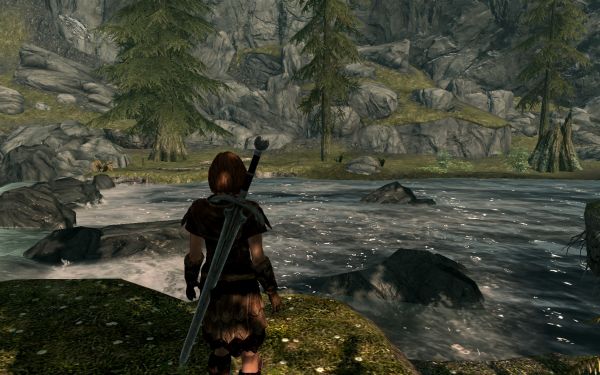
Not unlike home.
The Elder Scrolls V: SKYRIM already appears in my doomed third attempt at a novel this month. There, the main character is on his way to buy the game, and in his excitement he collides with a car on 11/11/11 at 11:11:11. He then wakes up in Daggerfall, 500 years after the Elders Scrolls games, in a female Breton body.
I seem to have escaped with my life so far, but naturally I pressed “Enter” on 11/11/11 at 11:11:11, as is good and proper, to enter the kingdom of Skyrim.
Skyrim, land of the Nords, is the northernmost province of the continent of Tamriel, where the Elder Scrolls games take place. From the very start of the series, the place has been pattern on Norway, although the names of people and places are more like a mixture of Danish and Old Norse, with English and Old English. It is amusing for a Norwegian to find a lake named Geir (a common Norwegian male name), and the game starts in a small town named Helgen (which could mean “saint”, “the weekend” or even “the guy called Helge”, although the latter is a West Norwegian usage mainly.)
The locals are blond, strong, tolerant of cold, and the men are usually bearded. The architecture is inspired by the Viking age, complete with stylish dragon heads. (The place reminds me quite a bit of the Viking part of the multiplayer game Dark Age of Camelot. It helps that the size of the game is also similar. It is truly huge for a single-player game.
As for the dragon decorations, they are somewhat ironic in this game, for it has dragons, and they are not friendly. Well, one of them is responsible for the main character’s escape inches from the headman’s axe, but that is somewhat of a coincidence. Or is it? In any case, the dragons are supposed to be the main enemy faction of the game. I, however, have only played the game for one short day (and I even managed to get a walk in), so my character is still level 3 and still gets scratched up good by the local bandits near the starting area. No dragons for a while, I hope. The things are HUGE. Big as houses.
Skyrim continues the Elder Scrolls tradition of letting the player do whatever he or she wants. There is a helpful character giving advise and fighting for you during the first quarter of an hour or so, perhaps a little more, which serves as a tutorial to the game. They have changed the controls a little again, so a tutorial is appreciated. After that, however, it is up to you. There is a main quest and the reviews says it is the best of its sort in the series, but there are a lot of other things to do. It is a bit like a Sims game with fighting, I guess. You can collect stuff and craft weapons and armor or potions or magical equipment, and sell them for profit. You can buy a house and furnish it. You can even marry, although I haven’t heard anything about babies.
The game is supposed to be theoretically endless, as the game engine creates new minor quests based on your experience so far. Of course, the same was the case for Daggerfall, but I still stopped playing it after a bit more than 5 years. I expect it to take substantially less time with this game, since real life has been upgraded since then…
I can’t really call this a review, as even many of the first impressions are not my own. It is more like explaining where the day went. Â But I would not be surprised if I end up doing what I did with Oblivion, traipse around the landscape and take photo-like screenshot.
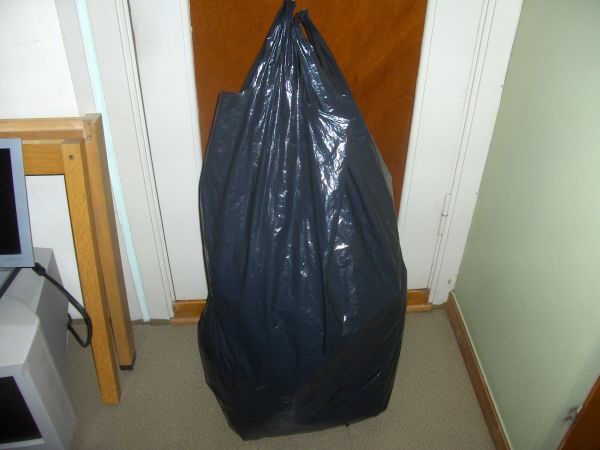
Filled with clothes. No, I am not moving again quite yet.
A newly established charity is collecting clothes for Russia and Poland. I wish them the best of luck: Russia actively tries to stop people from trucking stuff like that into the country, as it is bad for the local economy. And Poland… well, its standard of living is lower than ours, but I sincerely doubt there are more people needing clothes than the local Catholic charities can keep up with.
That said, I eagerly grab an excuse to get rid of some of my immense hoard of clothes. I packed this bag full, so full in fact that I have to be careful when dragging it; and yet if someone else had packed that bag and told me to look in my wardrobes, I would not have been able to tell what was gone. I am not even sure I would have been able to tell whether or not anything was gone at all! They still look and feel pretty much full.
To be honest, I wonder whether the charity will even come to pick up the clothes, or whether it is just a publicity stunt.
And even if they do pick it up, I wonder whether it will ever reach the supposedly poor in Eastern Europe, or whether it will be quietly burned when the challenge of transportation and distribution dawns on the organization. Or when it is stopped in customs.
But it is worth a try, simply because I will have that much less if I move again, which probably won’t be years off. If I live, I don’t see myself here in a year. You can rent fairly large houses not far from here for the rent I pay here. Although fairly large houses are likely to go to families, for obvious reasons. Â I have to scale down so I can rent something cheaper. Well, I don’t “have to” as in otherwise hunger, but “have to” as in I could spend that money more wisely, if at all. Having to rent an extra room to store the excessive amount of clothes is not wisdom, I think.
Even so, I am not packing up everything except what I need for a month. No. First of all because I don’t really expect this to work. But also because, well, it’s clothes and I can use them. If I live another 40 years, like my grandpa did, I can wear out most of them. And that’s better than them being burned near the border. Probably. I am not quite sure. So I am hedging. Giving away the stuff I am pretty sure I will never wear, and that is too good to throw away.
Well, that I think is too good to throw away. The poor Russians or Poles may well think differently. I am honestly not sure which has the highest standard for what to wear, they or I. Just because you’re poor does not mean you don’t have pride. I, on the other hand, am single and celibate. What use do I have for pride?
Since it will take a long time for the world to get used to me having an even more personal blog now, I’ll post this link to the latest entry.
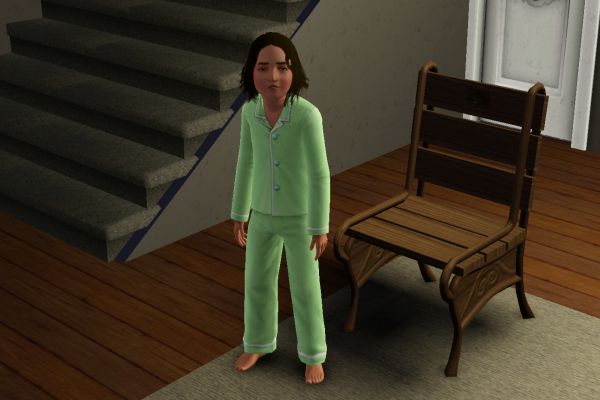
Here to talk smack about us sims again? We’re just as good as other people, you know!
By now, a few expansions and patches into Sims 3, the little computer people are disturbingly lifelike in their behavior. Or rather, and this is my point, humans are disturbingly sims-like in their behavior.
I hold the view that ordinary humans are barely conscious most of the time. Instead, their behavior (including their thoughts) can largely be described by two “engines” that work together: HABIT Â and IMPULSE.
The skeleton of a normal human life is the habit engine. It is itself not conscious: We don’t give any thought to whether we are going to get up in the morning – well, most of us don’t – or whether we are going to get dressed before going to work. We have large, overarching habits that gives us a structure for the day, and which again triggers smaller routines of habit to accomplish subgoals like buttoning shirts or tying shoelaces. In other words, we have a habit of stringing together habits in a certain sequence. This fills a good part of our day. As we get older, habits tend to grow stronger and fill ever more of the time.
The other engine is what I call the impulse engine. For fellow programmers, you may have thought of it as triggering an exception. One reason for such an impulse could be that a need has reached a trigger level: Hunger, thirst, excretion, attention. Usually a trigger event occurs well before critical levels are reached, although some needs have shorter fuses than others, so to speak. But in many (most?) cases the basic needs are already taken care of by our habits.
But the impulse engine is not triggered just by internal needs. It is also triggered by external objects. Seeing a bowl of snacks can trigger snacking, although I am not sure where the border goes to habit in that case. Seeing a sexy woman can definitely cause a trigger event in a man. Seeing a baby can trigger most women and many fathers, although most childless men consider babies part of the furniture unless the thing screams or stinks. And of course the whole business of advertising is based on triggering impulses. Of course, if you do that often enough and in the right context, it can eventually lead to a habit.
Both the habit and impulse engine are reasonably well modeled in The Sims 3. The little electronic people have a disturbingly human-like electronic mind. What they don’t have is a human soul (in the classical sense) or human spirit. This has to be provided by the player.
“Great souls have wills; feeble ones have only wishes” says a famous Chinese proverb. In that light, sims are exceedingly feeble: Without the support of their player, they will achieve their goals purely by accident, and higher goals (like reaching the top of a career or maximizing several skills) not at all. They will however be able to stay alive, employed and reasonably satisfied about their needs, and even reproduce and raise (usually crazy, neurotic, grumpy or hot-headed) children. Â From what I hear, they are not very different from Texans.
The purpose of religious ritual, like keeping the Sabbath or saying grace, is to interrupt the automatic working of the twin engines of habit and impulse, and give the soul a bit of “space” in which it has the chance to wake up for a moment and become aware. It tries, like this blog, to make people suddenly sit up and think: “I am right here, right now. This is it. I am alive!”
I may not have mentioned it on this blog, but I have noticed that the median weight of Norwegians has increased steadily after saying grace went completely out of fashion here during my childhood and youth. Of course, there are numerous other factors like the size of dinner plates and the widespread use of cars. But still… if you woke up each time you sat down to eat, and became acutely aware of who you were and what you were doing, would it change nothing?
Sims never say grace. But even if they did, it would just be another habit.
I don’t want to clutter up my main journal with health issues that only concern myself and perhaps a few people who share many of my genes. So instead it’s in a separate journal. Knees this time.